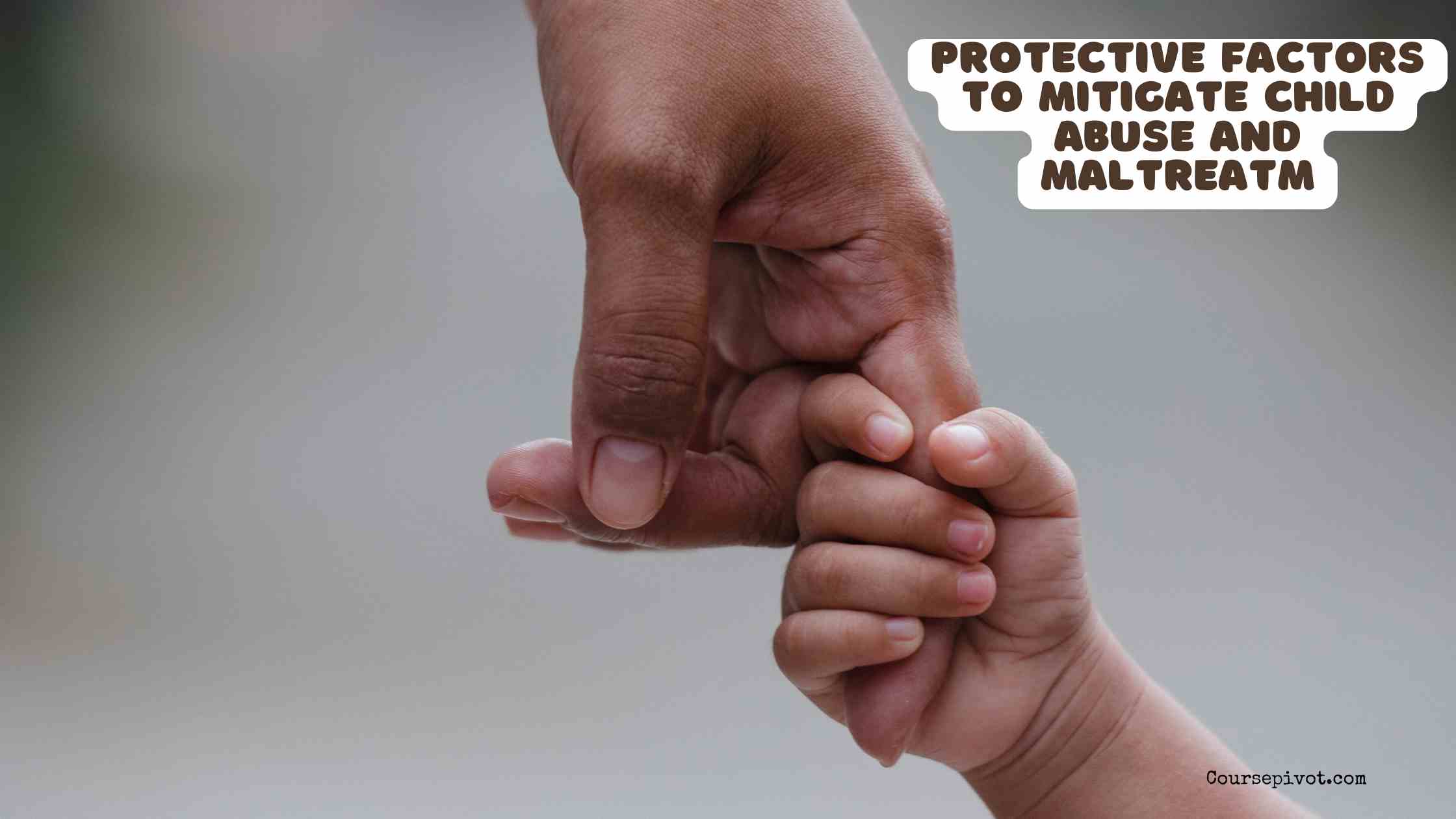
Protective Factors to Mitigate Child Abuse and Maltreatment
Child abuse and maltreatment affect millions, with over 600,000 cases reported annually in the U.S., per 2023 data from the National Child Abuse and Neglect Data System. Yet, hope lies in protective factors—strengths that can reduce the risk of harm. These buffers, rooted in families, communities, and systems, create safer environments for children. This blog explores five key protective factors that mitigate child abuse and maltreatment, offering actionable insights to foster resilience and safety.
Table of Contents
Strong Parental Resilience and Coping Skills
Parents who manage stress effectively are less likely to engage in abusive behaviors. Resilience—adaptability in the face of challenges—helps caregivers navigate financial strain, mental health issues, or relationship conflicts. A 2024 study from the American Psychological Association found that parents with strong coping skills reduced maltreatment risk by 30%.
For example, a single parent facing job loss might use mindfulness or support groups to stay grounded, avoiding lashing out at their child. Programs teaching stress management, like those from Prevent Child Abuse America, empower parents. Building resilience acts as a shield, protecting children from neglect or emotional abuse.
Stable and Supportive Family Relationships
Healthy family dynamics foster safety and trust, reducing the likelihood of maltreatment. Open communication, mutual respect, and emotional support create a nurturing home. According to a 2023 Child Trends report, children in supportive families were 25% less likely to experience abuse compared to those in conflict-ridden homes.
Consider a family that holds regular dinners to discuss challenges openly. This connection helps parents address frustrations constructively, preventing physical or verbal outbursts. Family counseling or parenting classes can strengthen these bonds, ensuring children feel valued and secure.
Access to Community Resources and Social Support
Strong community networks provide families with a safety net, easing stressors that lead to abuse. Access to food banks, childcare, or mental health services alleviates pressures like poverty or isolation. A 2024 study from the Journal of Community Psychology noted that families with robust social support reported 20% lower maltreatment rates.
A parent struggling financially might rely on a local nonprofit for groceries, reducing stress that could trigger neglect. Community centers or faith-based groups offer practical help and emotional backing. These resources, often underutilized, are vital in preventing child mistreatment.
Positive Parenting Knowledge and Skills
Parents equipped with effective child-rearing strategies are better prepared to nurture without harm. Understanding child development and discipline techniques—like time-outs instead of hitting—lowers abuse risk. The U.S. Department of Health and Human Services reported in 2023 that parenting education programs cut maltreatment incidents by 15%.
Imagine a parent learning to redirect a toddler’s tantrum calmly through a workshop. This knowledge prevents escalation into physical discipline. Programs like Triple P (Positive Parenting Program) teach practical skills, empowering caregivers to build healthy relationships with their children.
Safe and Stable Environments for Children
A secure physical and emotional environment reduces vulnerability to abuse. Safe homes, schools, and neighborhoods free from violence or neglect foster child well-being. A 2024 Child Welfare Information Gateway study found that children in stable environments faced 40% lower risk of maltreatment.
For instance, a child attending a school with anti-bullying programs feels protected, reducing stress that might amplify home tensions. Affordable housing or community safety initiatives also play a role. Creating these environments ensures children thrive without fear of harm.
Why Protective Factors Matter
Protective factors are more than safeguards—they’re investments in children’s futures. By reducing maltreatment, they lower the risk of long-term issues like depression or academic failure, which affect 50% of abused children, per a 2024 Child Trends report. Strong families and communities create a ripple effect, enhancing societal well-being.
These factors also ease the burden on systems like child welfare, saving billions in costs. At Coursepivot, we’ve supported students researching child protection in term papers, highlighting the power of prevention. Building these strengths isn’t just reactive—it’s a proactive step toward healthier generations.
Practical Tips to Strengthen Protective Factors
Fostering protective factors requires collective effort. Here are actionable strategies to mitigate child abuse:
- Enhance Parental Resilience: Encourage stress-relief practices like meditation or exercise. Apps like Calm or local support groups can help.
- Build Family Bonds: Promote family activities like game nights or shared meals. Resources from Family Strengthening Network offer ideas.
- Connect to Resources: Link families to community services via social workers or websites like 211.org. Coursepivot’s tutoring aids students exploring these topics in essays.
- Teach Parenting Skills: Enroll in evidence-based programs like Incredible Years. Online courses or local agencies provide access.
- Create Safe Spaces: Advocate for safe schools and parks through community boards. Programs like Safe Kids Worldwide offer guidance.
| Strategy | Benefit | Resource/Example |
|---|---|---|
| Enhance Parental Resilience | Reduces stress-driven abuse | Calm app, support groups |
| Build Family Bonds | Fosters trust and communication | Family Strengthening Network |
| Connect to Resources | Eases financial and emotional strain | 211.org, Coursepivot research support |
| Teach Parenting Skills | Promotes non-violent discipline | Incredible Years, local workshops |
| Create Safe Spaces | Protects children from harm | Safe Kids Worldwide, school programs |
These steps empower families and communities to prevent maltreatment. Schools can host workshops, while individuals can volunteer or donate to child welfare groups. Education and advocacy amplify impact.
Key Takeaways
Protective factors like parental resilience, supportive families, community resources, positive parenting, and safe environments significantly reduce child abuse and maltreatment. These strengths lower risk by up to 40%, per research, shielding children from physical, emotional, and social harm. By fostering these factors through practical actions—like connecting families to services or teaching parenting skills—we create nurturing spaces for growth. Resources like Coursepivot’s academic support help students explore these solutions, driving awareness. Investing in protective factors builds resilient children and stronger communities for a safer tomorrow.
Cite this article
You can copy and paste your preferred citation format below.
Martin, L. & Arquette, E.. (2025, August 1). Protective Factors to Mitigate Child Abuse and Maltreatment. Coursepivot.com. https://coursepivot.com/blog/protective-factors-to-mitigate-child-abuse-and-maltreatment/


